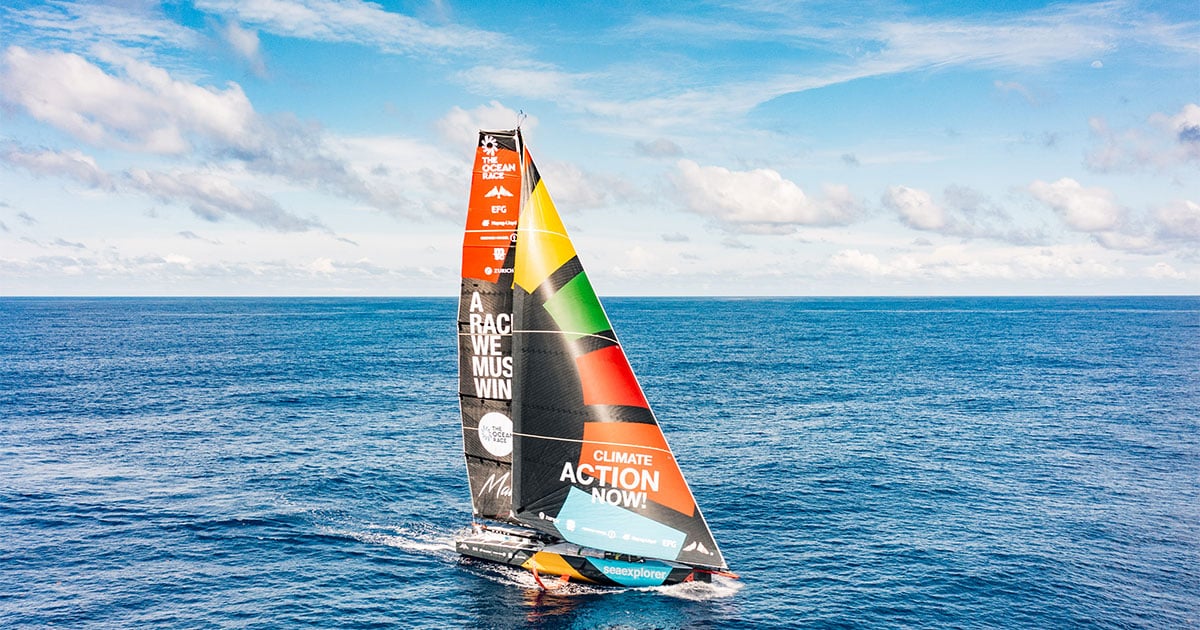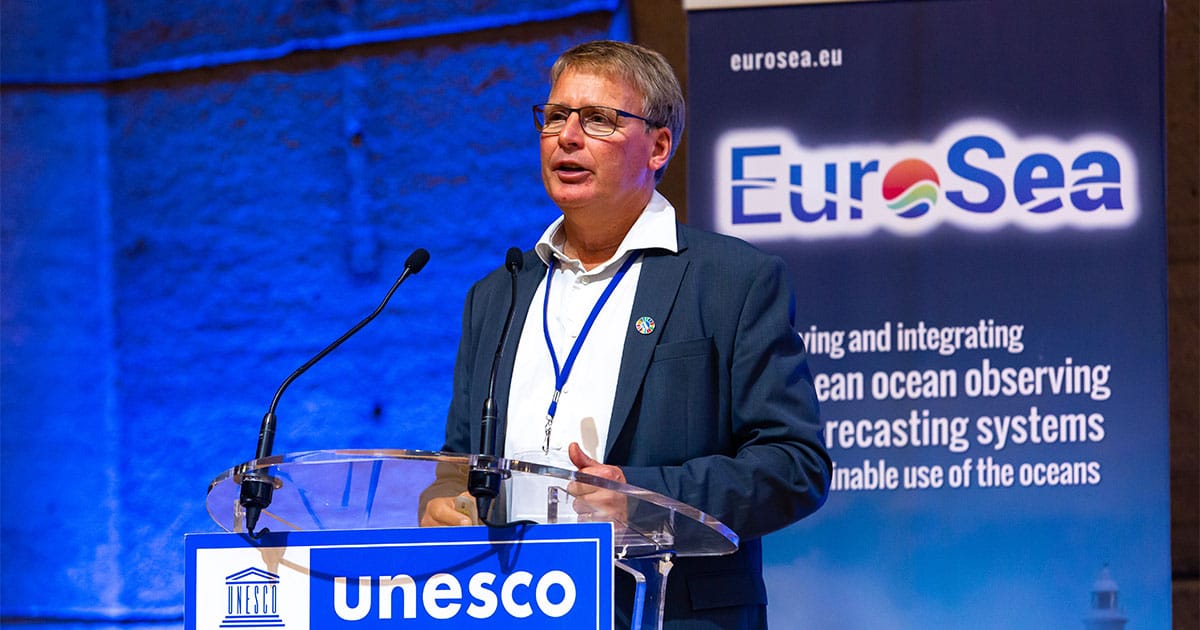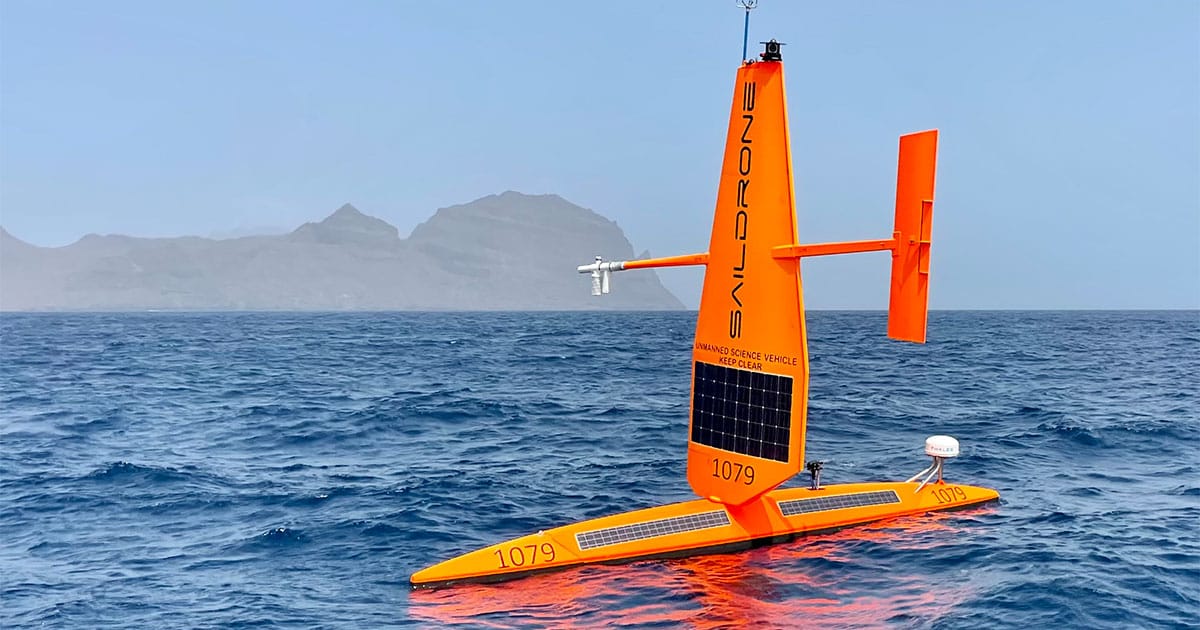Its results chart the waters for a more holistic and sustainable ocean observation and forecasting—in Europe and beyond.
In a stride towards advancing ocean observing and forecasting, the European project EuroSea culminates its four-year journey with the release of its Legacy Report. Its findings, recommendations, and best practices offer valuable insights for advancing marine knowledge and sustaining a science-based blue economy on a global scale.
EuroSea brought together more than 150 experts from 53 partner institutions from 16 countries under the leadership of Dr. Toste Tanhua, chemical oceanographer at GEOMAR Helmholtz Centre for Ocean Research Kiel. The project was funded with 12.6 million euros by the European Union.
Its concluding Legacy Report advocates for a holistic and integrated approach for ocean observing and forecasting. From strengthening the European Ocean Observing System (EOOS) and supporting the Global Ocean Observing System (GOOS) to fostering developments in blue economy and informing policymaking, EuroSea has made a significant impact on the landscape of marine knowledge and innovation.
 The racing yacht “Malizia Seaexplorer” collects data for scientific analysis during her participation in the Ocean Race. (Image credit: Antoine Auriol)
The racing yacht “Malizia Seaexplorer” collects data for scientific analysis during her participation in the Ocean Race. (Image credit: Antoine Auriol)
The report emphasizes EuroSea’s commitment to delivering Findable, Accessible, Interoperable, and Reusable (FAIR) ocean data, enhancing modelling and forecasting capabilities, and consolidating these advancements into user-focused services. The document is an extraction of the impacts of EuroSea, which leaves its footprint on many different levels of the multi-faceted observing and forecasting landscape. In addition to leading this innovative project, the GEOMAR team also made other substantial contributions to the success of EuroSea.
The researchers examined legal aspects of innovative ocean observations and existing gaps in the European Ocean Observing and Forecasting System. They estimated carbon fluxes for the tropical Atlantic. And using a wide variety of platforms, including innovative approaches, they collected and analyzed research data. These contributions decisively advanced data synthesis products such as the Surface Ocean CO₂ Atlas (SOCAT) and the Global Ocean Data Analysis Project (GLODAP) and improved the international and interdisciplinary coordination of ocean observations. This helped to inform, integrate and connect stakeholders with an interest in the use of ocean observations and forecasts. Also, public and political decision-makers got new valuable insights into the importance of long-term and sustainable ocean observing and forecasting for areas such as aquaculture, fisheries, port logistics, maritime transport, weather and tourism.
“EuroSea’s legacy extends beyond technological advancements and emphasizes the importance of cooperation, coordination, and a sustained, informed approach and we hope our achievements set the stage for a more effective, efficient, and impactful future in ocean observing and forecasting on a global scale,” says EuroSea coordinator Dr. Toste Tanhua.
 Dr. Toste Tanhua, chemical oceanographer at GEOMAR Helmholtz Centre for Ocean Research Kiel, led the EuroSea project. (Image credit: UNESCO / Fabrice Gentile)
Dr. Toste Tanhua, chemical oceanographer at GEOMAR Helmholtz Centre for Ocean Research Kiel, led the EuroSea project. (Image credit: UNESCO / Fabrice Gentile)
Happy with the progress and end of the project, adds EuroSea manager Nicole Köstner: “The decisive factor for the success of the project was the exceptionally good and trusting cooperation and communication between all 53 project partners. The project mission was tackled together with great dedication and commitment and the success of the project shows once again that challenges concerning our oceans cannot be solved by individuals but only by well-coordinated teams.”
Original publication:
Eparkhina, D. (2023): EuroSea Legacy Report. EuroSea Deliverable, D8.12., doi: 10.3289/eurosea_d8.12
Project funding:
The EuroSea project is a European Union innovation action funded with 12.6 million euros from 2019 to 2023 by the European Commission’s Horizon 2020 research and innovation funding program as part of a call to support the G7 Future of Seas and Oceans initiative.

